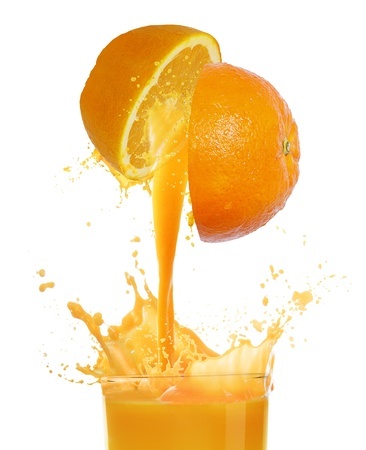Vanilla, like it's flavor, has a rich history. Not just in food, but in medicines, perfumes, candles, industrial applications, and so on; vanilla is multi-purpose. Vanilla has become a top tier flavor that is known by all and loved by most. Vanilla is so common, it's often times mistaken as the "plain" flavor in food products (being white also doesn't help). Vanilla ice cream, cookies, yogurt, pudding, cupcakes, crackers, coffee creamer, soda, the list goes on and on. An estimated 18,000 products contain vanilla flavor, yet as widespread as that may seem, vanilla is not that easy to find, nor is it cheap to produce. According to Huffpost, the average price for a kilogram of vanilla is $350-500, with a peak of $600 in 2017; the price constantly fluctuating (prices being higher lately thanks to hurricanes). Things haven't changed as vanilla is still staggeringly expensive - the second most expensive spice after saffron according to Huffpost - even though Americans consume 638 million beans a year. The reason vanilla is so expensive is because it is hard to grow. When many people think of growing fruits, vegetables, and flavors, they think of just throwing a seed into the ground and watering it. Vanilla beans are actually pollinated by hand. Hand pollination is not an easy craft and growing operations are small. Vanilla can only grow 10 to 20 degrees away from the equator, and 80% of today's natural vanilla hails from farms in Madagascar. It takes 600 hand-pollinated vanilla blossoms to produce 1 kilogram of vanilla beans. One pound of processed vanilla takes five to seven pounds of vanilla beans.
Vanilla can be traced back to Mexico, which made its way across the world as colonization and conquests took place starting in the 1500's. In 1841, a 12 year old slave on the French island of Reunion named Edmond Albius developed the method of pollinating vanilla flowers by hand with a stick: a method that is still done today.
Because cultivating vanilla is such a task, and an expensive one at that, the vanilla that you know and love is highly unlikely actual vanilla, but rather vanilla flavoring made through chemistry. According to The Conversation, less than 1% of vanilla flavor is from actual vanilla beans. According to The Conversation, vanillin was developed in the 19th century, around 1858. Vanillin is the flavor compound that gives vanilla its smell that we know and love, and scientists were about to pull it out of "lignin" and "eugenol." 85% of vanilla today comes from "guaiacol", which in chemistry is also known as C6H4(OH)(OCH3). Vanilla is one of up to 250 chemical compounds that make up vanilla flavoring, according to Smithsonian. Water and ethanol are added to make vanilla extract. This chemistry and the fact that a little vanilla/vanilla goes a long way is why extracted vanilla is brown, but vanilla-flavored products are typically white and d on't change the color of other typical ingrediants such as milk and sugar. If your vanilla ice cream was brown, it would cost hundreds of dollars, and the overpowering flavor and taste would make you pass out, honestly.
Brands today have joined the "natural foods" wave, but at a cost. Artificial ingredients and flavors in foods have been dropping this decade from fast food to grocery brands, with consumer support - mostly. The problem with vanilla is that it's just not as easy to switch as other flavors. According to Scientific American, Nestle was the one of the first major companies to announce an artificial overhaul in 2015 when it came to flavorings. Nestle announced that they would stop putting vanillin in their chocolate to contrast with the cocoa. This put the pressure on other brands and their products. And often strawberry, chocolate, coconut, and caramel flavors rely on vanilla as well to create a holistic flavor experience. Vanilla is a big part of what makes Nestle's chocolate "Nestle."
Even if food brands decide to rely less on synthetic vanillin, that doesn't mean completely natural beans are going to benefit from the switch. According to Scientific American, Solvay makes "natural" vanillin by fermenting yeast with ferulic acid, which comes from rice bran oil. So, still not beans. Eugenol is also used, but it's an industrial process, and it's not a cheap. Even petroleum can play a role. GMO vanillin has also been created by Evolva, but it has not yet been embraced by the FDA, food companies, or the public.
The good thing is that because of the chemistry, it's become hard to really tell the difference between actual vanilla and vanilla flavoring - many actually preferring the latter. And vanillin is safe to consume. Again, it makes up 99% of what we know as vanilla. No other spice or flavoring can lay the crazy claims that vanilla does. So next time you crack open the vanilla ice cream or get a sugar high off vanilla icing on vanilla cupcakes, remember it's actually science that's made it possible and made it cheap.
*sources: The Conversation, Smithsonian, Science Meets Food, Fortune, Food Business News, NPR, Scientific American, Business Insider, Rodelle Kitchen, picture from Fine Cooking
Brands today have joined the "natural foods" wave, but at a cost. Artificial ingredients and flavors in foods have been dropping this decade from fast food to grocery brands, with consumer support - mostly. The problem with vanilla is that it's just not as easy to switch as other flavors. According to Scientific American, Nestle was the one of the first major companies to announce an artificial overhaul in 2015 when it came to flavorings. Nestle announced that they would stop putting vanillin in their chocolate to contrast with the cocoa. This put the pressure on other brands and their products. And often strawberry, chocolate, coconut, and caramel flavors rely on vanilla as well to create a holistic flavor experience. Vanilla is a big part of what makes Nestle's chocolate "Nestle."
Even if food brands decide to rely less on synthetic vanillin, that doesn't mean completely natural beans are going to benefit from the switch. According to Scientific American, Solvay makes "natural" vanillin by fermenting yeast with ferulic acid, which comes from rice bran oil. So, still not beans. Eugenol is also used, but it's an industrial process, and it's not a cheap. Even petroleum can play a role. GMO vanillin has also been created by Evolva, but it has not yet been embraced by the FDA, food companies, or the public.
The good thing is that because of the chemistry, it's become hard to really tell the difference between actual vanilla and vanilla flavoring - many actually preferring the latter. And vanillin is safe to consume. Again, it makes up 99% of what we know as vanilla. No other spice or flavoring can lay the crazy claims that vanilla does. So next time you crack open the vanilla ice cream or get a sugar high off vanilla icing on vanilla cupcakes, remember it's actually science that's made it possible and made it cheap.
*sources: The Conversation, Smithsonian, Science Meets Food, Fortune, Food Business News, NPR, Scientific American, Business Insider, Rodelle Kitchen, picture from Fine Cooking




